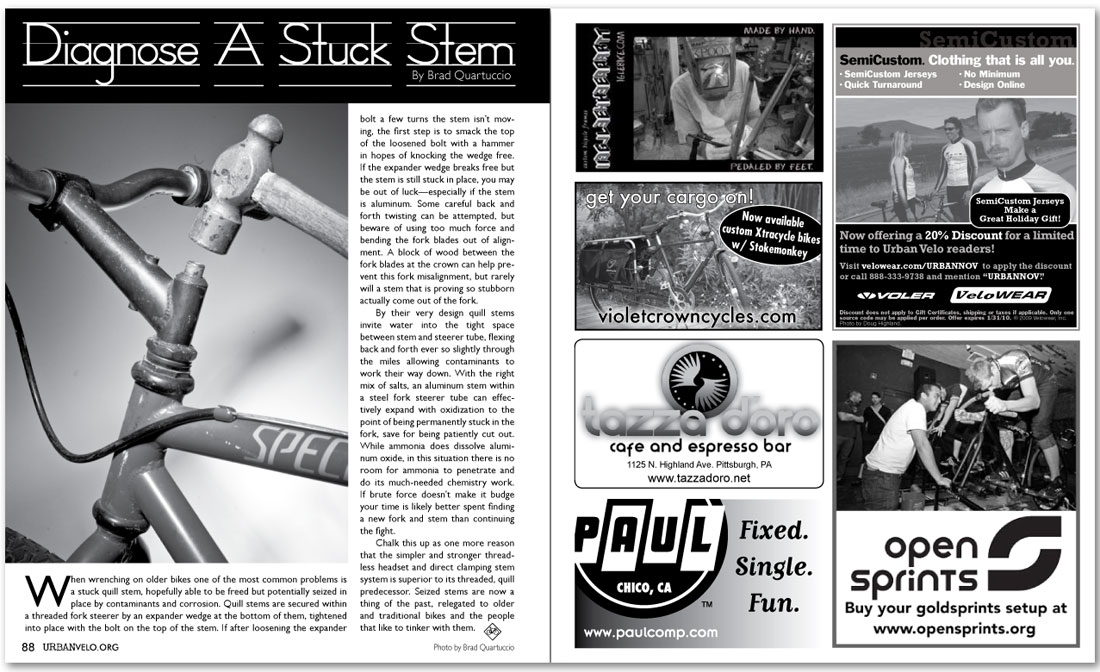

|
|||
Diagnose A Stuck StemBy Brad Quartuccio When wrenching on older bikes one of the most common problems is a stuck quill stem, hopefully able to be freed but potentially seized in place by contaminants and corrosion. Quill stems are secured within a threaded fork steerer by an expander wedge at the bottom of them, tightened into place with the bolt on the top of the stem. If after loosening the expander bolt a few turns the stem isn’t moving, the first step is to smack the top of the loosened bolt with a hammer in hopes of knocking the wedge free. If the expander wedge breaks free but the stem is still stuck in place, you may be out of luck—especially if the stem is aluminum. Some careful back and forth twisting can be attempted, but beware of using too much force and bending the fork blades out of alignment. A block of wood between the fork blades at the crown can help prevent this fork misalignment, but rarely will a stem that is proving so stubborn actually come out of the fork.
|
|
|